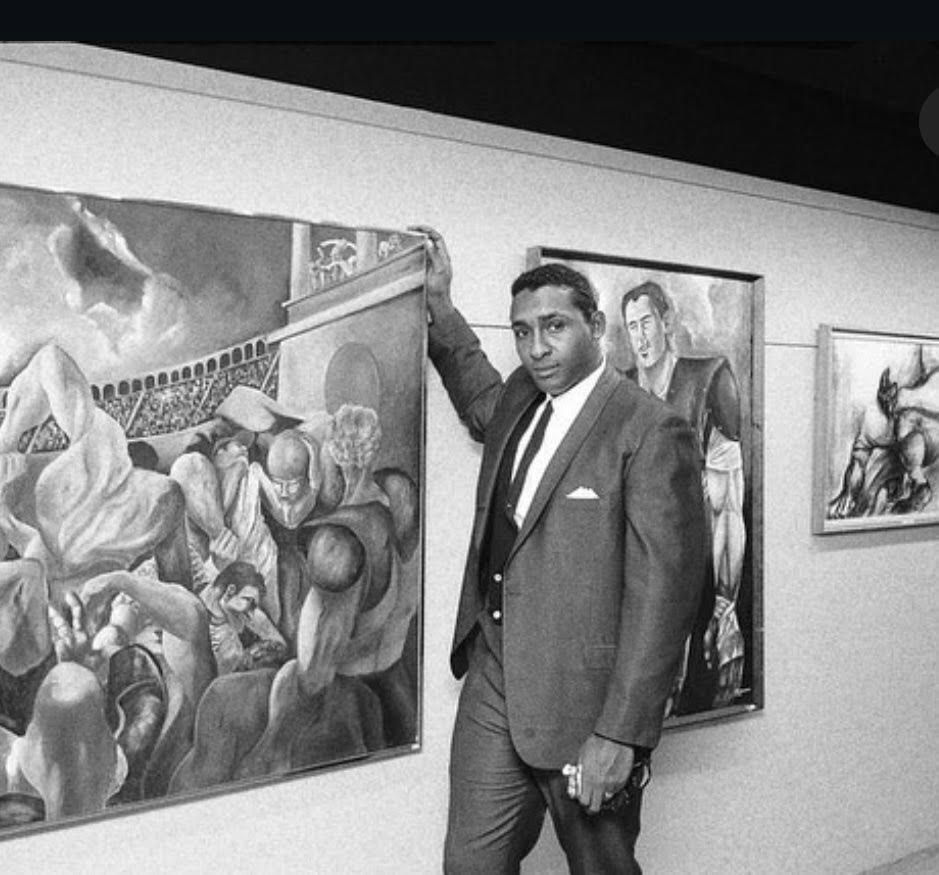DID YOU KNOW ERNIE BARNES was more than an artist ? AI assistant
- FLM Team

- Aug 10
- 3 min read

Ernie Barnes was an influential African American painter, best known for his vibrant and dynamic artwork that captured the essence of African American culture and life. Born on July 15, 1938, in Durham, North Carolina, Barnes faced the challenges of growing up in the segregated South. He initially pursued a career in sports, playing college football at North Carolina Central University, where he earned a degree in fine arts.
After a brief stint in the NFL with the San Diego Chargers, Barnes turned his full attention to art. He moved to Los Angeles in the 1960s, where he began to develop his distinctive style characterized by elongated figures and bold colors. His paintings often depicted scenes of African American life, celebrating the community's resilience, joy, and struggles. One of his most famous works, “The Sugar Shack,” gained widespread recognition after being featured in the opening credits of the TV show “Good Times.” This painting, along with many others, exemplified the vibrancy and cultural richness of African American experiences.
Barnes was not only a painter but also a successful illustrator and author. He wrote several books, including "The Artist and the Athlete," where he explored the intersection of sports and the arts. Throughout his career, he received numerous accolades, including the prestigious NAACP Image Award.

In addition to his artistic contributions, Barnes was committed to mentoring young artists and advocating for social justice. He used his platform to raise awareness about issues affecting the African American community.
Ernie Barnes passed away on April 27, 2021, but his legacy endures through his art and the impact he had on future generations of artists. His work continues to inspire and resonate, serving as a powerful reminder of the beauty and complexity of African American life.
Ernie Barnes' early career in sports had a profound influence on his later work as an artist, shaping both his themes and techniques. Playing college football at North Carolina Central University and later in the NFL, Barnes was immersed in the physicality, movement, and rhythm of athletic competition. This background contributed to the dynamic, elongated figures that characterize much of his artwork, reflecting the energy and motion he experienced on the field.
The camaraderie and community spirit he encountered in sports also found expression in his paintings. Many of his works celebrate African American life, capturing moments of joy, resilience, and cultural richness, which were often mirrored in the bonds formed among teammates and communities. The sense of struggle and triumph in sports parallels the themes of perseverance and hope in his art.

Moreover, his experiences as an athlete provided him with a unique perspective on the intersection of sports and culture. This informed his storytelling ability, allowing him to convey deeper narratives about identity and societal issues through his visual language. His painting “The Sugar Shack,” for example, not only showcases movement and energy reminiscent of athleticism but also serves as a commentary on African American life and community gatherings.
In essence, Barnes' athletic background enriched his artistic vision, enabling him to create works that resonate with movement, emotion, and cultural significance, bridging the worlds of art and sports in a meaningful way.
Yes, Ernie Barnes received several awards and accolades throughout his career, both as an artist and for his contributions to sports. Some notable recognitions include:
1. NAACP Image Award: Barnes received this award for his artistic contributions, celebrating his impact on African American culture.
2. The 2001 Black History Month Celebration: Barnes was honored during this event for his contributions to the arts and his influence on African American identity.
3. Recognition by the NFL: After his sports career, Barnes was acknowledged by the NFL for his artistic achievements and contributions to the league's history.
4. Various Exhibitions: His work has been featured in numerous exhibitions, and he has been recognized by art institutions for his distinctive style and influence.
Barnes' art continues to be celebrated for its cultural significance and emotional depth, contributing to his lasting legacy.








Comments